Drug-Eluting Stents
Drug-Eluting Balloons
Transdermal Drug Delivery Systems
Inhalation Drug Delivery Devices
Cardiovascular
Orthopedics
Oncology
Neurology
Hospitals
Ambulatory Surgical Centers
Homecare
Direct Sales
Distributors
Online Sales
North America
Europe
South America
Asia Pacific
Middle East and Africa
North America Outlook (USD Billion, 2019-2035)
North America Drug-Device Combination Market by Product Type
Drug-Eluting Stents
Drug-Eluting Balloons
Transdermal Drug Delivery Systems
Inhalation Drug Delivery Devices
North America Drug-Device Combination Market by Application Type
Cardiovascular
Orthopedics
Oncology
Neurology
North America Drug-Device Combination Market by End Use Type
Hospitals
Ambulatory Surgical Centers
Homecare
North America Drug-Device Combination Market by Distribution Channel Type
Direct Sales
Distributors
Online Sales
North America Drug-Device Combination Market by Regional Type
US
Canada
US Outlook (USD Billion, 2019-2035)
US Drug-Device Combination Market by Product Type
Drug-Eluting Stents
Drug-Eluting Balloons
Transdermal Drug Delivery Systems
Inhalation Drug Delivery Devices
US Drug-Device Combination Market by Application Type
Cardiovascular
Orthopedics
Oncology
Neurology
US Drug-Device Combination Market by End Use Type
Hospitals
Ambulatory Surgical Centers
Homecare
US Drug-Device Combination Market by Distribution Channel Type
Direct Sales
Distributors
Online Sales
CANADA Outlook (USD Billion, 2019-2035)
CANADA Drug-Device Combination Market by Product Type
Drug-Eluting Stents
Drug-Eluting Balloons
Transdermal Drug Delivery Systems
Inhalation Drug Delivery Devices
CANADA Drug-Device Combination Market by Application Type
Cardiovascular
Orthopedics
Oncology
Neurology
CANADA Drug-Device Combination Market by End Use Type
Hospitals
Ambulatory Surgical Centers
Homecare
CANADA Drug-Device Combination Market by Distribution Channel Type
Direct Sales
Distributors
Online Sales
Europe Outlook (USD Billion, 2019-2035)
Europe Drug-Device Combination Market by Product Type
Drug-Eluting Stents
Drug-Eluting Balloons
Transdermal Drug Delivery Systems
Inhalation Drug Delivery Devices
Europe Drug-Device Combination Market by Application Type
Cardiovascular
Orthopedics
Oncology
Neurology
Europe Drug-Device Combination Market by End Use Type
Hospitals
Ambulatory Surgical Centers
Homecare
Europe Drug-Device Combination Market by Distribution Channel Type
Direct Sales
Distributors
Online Sales
Europe Drug-Device Combination Market by Regional Type
Germany
UK
France
Russia
Italy
Spain
Rest of Europe
GERMANY Outlook (USD Billion, 2019-2035)
GERMANY Drug-Device Combination Market by Product Type
Drug-Eluting Stents
Drug-Eluting Balloons
Transdermal Drug Delivery Systems
Inhalation Drug Delivery Devices
GERMANY Drug-Device Combination Market by Application Type
Cardiovascular
Orthopedics
Oncology
Neurology
GERMANY Drug-Device Combination Market by End Use Type
Hospitals
Ambulatory Surgical Centers
Homecare
GERMANY Drug-Device Combination Market by Distribution Channel Type
Direct Sales
Distributors
Online Sales
UK Outlook (USD Billion, 2019-2035)
UK Drug-Device Combination Market by Product Type
Drug-Eluting Stents
Drug-Eluting Balloons
Transdermal Drug Delivery Systems
Inhalation Drug Delivery Devices
UK Drug-Device Combination Market by Application Type
Cardiovascular
Orthopedics
Oncology
Neurology
UK Drug-Device Combination Market by End Use Type
Hospitals
Ambulatory Surgical Centers
Homecare
UK Drug-Device Combination Market by Distribution Channel Type
Direct Sales
Distributors
Online Sales
FRANCE Outlook (USD Billion, 2019-2035)
FRANCE Drug-Device Combination Market by Product Type
Drug-Eluting Stents
Drug-Eluting Balloons
Transdermal Drug Delivery Systems
Inhalation Drug Delivery Devices
FRANCE Drug-Device Combination Market by Application Type
Cardiovascular
Orthopedics
Oncology
Neurology
FRANCE Drug-Device Combination Market by End Use Type
Hospitals
Ambulatory Surgical Centers
Homecare
FRANCE Drug-Device Combination Market by Distribution Channel Type
Direct Sales
Distributors
Online Sales
RUSSIA Outlook (USD Billion, 2019-2035)
RUSSIA Drug-Device Combination Market by Product Type
Drug-Eluting Stents
Drug-Eluting Balloons
Transdermal Drug Delivery Systems
Inhalation Drug Delivery Devices
RUSSIA Drug-Device Combination Market by Application Type
Cardiovascular
Orthopedics
Oncology
Neurology
RUSSIA Drug-Device Combination Market by End Use Type
Hospitals
Ambulatory Surgical Centers
Homecare
RUSSIA Drug-Device Combination Market by Distribution Channel Type
Direct Sales
Distributors
Online Sales
ITALY Outlook (USD Billion, 2019-2035)
ITALY Drug-Device Combination Market by Product Type
Drug-Eluting Stents
Drug-Eluting Balloons
Transdermal Drug Delivery Systems
Inhalation Drug Delivery Devices
ITALY Drug-Device Combination Market by Application Type
Cardiovascular
Orthopedics
Oncology
Neurology
ITALY Drug-Device Combination Market by End Use Type
Hospitals
Ambulatory Surgical Centers
Homecare
ITALY Drug-Device Combination Market by Distribution Channel Type
Direct Sales
Distributors
Online Sales
SPAIN Outlook (USD Billion, 2019-2035)
SPAIN Drug-Device Combination Market by Product Type
Drug-Eluting Stents
Drug-Eluting Balloons
Transdermal Drug Delivery Systems
Inhalation Drug Delivery Devices
SPAIN Drug-Device Combination Market by Application Type
Cardiovascular
Orthopedics
Oncology
Neurology
SPAIN Drug-Device Combination Market by End Use Type
Hospitals
Ambulatory Surgical Centers
Homecare
SPAIN Drug-Device Combination Market by Distribution Channel Type
Direct Sales
Distributors
Online Sales
REST OF EUROPE Outlook (USD Billion, 2019-2035)
REST OF EUROPE Drug-Device Combination Market by Product Type
Drug-Eluting Stents
Drug-Eluting Balloons
Transdermal Drug Delivery Systems
Inhalation Drug Delivery Devices
REST OF EUROPE Drug-Device Combination Market by Application Type
Cardiovascular
Orthopedics
Oncology
Neurology
REST OF EUROPE Drug-Device Combination Market by End Use Type
Hospitals
Ambulatory Surgical Centers
Homecare
REST OF EUROPE Drug-Device Combination Market by Distribution Channel Type
Direct Sales
Distributors
Online Sales
APAC Outlook (USD Billion, 2019-2035)
APAC Drug-Device Combination Market by Product Type
Drug-Eluting Stents
Drug-Eluting Balloons
Transdermal Drug Delivery Systems
Inhalation Drug Delivery Devices
APAC Drug-Device Combination Market by Application Type
Cardiovascular
Orthopedics
Oncology
Neurology
APAC Drug-Device Combination Market by End Use Type
Hospitals
Ambulatory Surgical Centers
Homecare
APAC Drug-Device Combination Market by Distribution Channel Type
Direct Sales
Distributors
Online Sales
APAC Drug-Device Combination Market by Regional Type
China
India
Japan
South Korea
Malaysia
Thailand
Indonesia
Rest of APAC
CHINA Outlook (USD Billion, 2019-2035)
CHINA Drug-Device Combination Market by Product Type
Drug-Eluting Stents
Drug-Eluting Balloons
Transdermal Drug Delivery Systems
Inhalation Drug Delivery Devices
CHINA Drug-Device Combination Market by Application Type
Cardiovascular
Orthopedics
Oncology
Neurology
CHINA Drug-Device Combination Market by End Use Type
Hospitals
Ambulatory Surgical Centers
Homecare
CHINA Drug-Device Combination Market by Distribution Channel Type
Direct Sales
Distributors
Online Sales
INDIA Outlook (USD Billion, 2019-2035)
INDIA Drug-Device Combination Market by Product Type
Drug-Eluting Stents
Drug-Eluting Balloons
Transdermal Drug Delivery Systems
Inhalation Drug Delivery Devices
INDIA Drug-Device Combination Market by Application Type
Cardiovascular
Orthopedics
Oncology
Neurology
INDIA Drug-Device Combination Market by End Use Type
Hospitals
Ambulatory Surgical Centers
Homecare
INDIA Drug-Device Combination Market by Distribution Channel Type
Direct Sales
Distributors
Online Sales
JAPAN Outlook (USD Billion, 2019-2035)
JAPAN Drug-Device Combination Market by Product Type
Drug-Eluting Stents
Drug-Eluting Balloons
Transdermal Drug Delivery Systems
Inhalation Drug Delivery Devices
JAPAN Drug-Device Combination Market by Application Type
Cardiovascular
Orthopedics
Oncology
Neurology
JAPAN Drug-Device Combination Market by End Use Type
Hospitals
Ambulatory Surgical Centers
Homecare
JAPAN Drug-Device Combination Market by Distribution Channel Type
Direct Sales
Distributors
Online Sales
SOUTH KOREA Outlook (USD Billion, 2019-2035)
SOUTH KOREA Drug-Device Combination Market by Product Type
Drug-Eluting Stents
Drug-Eluting Balloons
Transdermal Drug Delivery Systems
Inhalation Drug Delivery Devices
SOUTH KOREA Drug-Device Combination Market by Application Type
Cardiovascular
Orthopedics
Oncology
Neurology
SOUTH KOREA Drug-Device Combination Market by End Use Type
Hospitals
Ambulatory Surgical Centers
Homecare
SOUTH KOREA Drug-Device Combination Market by Distribution Channel Type
Direct Sales
Distributors
Online Sales
MALAYSIA Outlook (USD Billion, 2019-2035)
MALAYSIA Drug-Device Combination Market by Product Type
Drug-Eluting Stents
Drug-Eluting Balloons
Transdermal Drug Delivery Systems
Inhalation Drug Delivery Devices
MALAYSIA Drug-Device Combination Market by Application Type
Cardiovascular
Orthopedics
Oncology
Neurology
MALAYSIA Drug-Device Combination Market by End Use Type
Hospitals
Ambulatory Surgical Centers
Homecare
MALAYSIA Drug-Device Combination Market by Distribution Channel Type
Direct Sales
Distributors
Online Sales
THAILAND Outlook (USD Billion, 2019-2035)
THAILAND Drug-Device Combination Market by Product Type
Drug-Eluting Stents
Drug-Eluting Balloons
Transdermal Drug Delivery Systems
Inhalation Drug Delivery Devices
THAILAND Drug-Device Combination Market by Application Type
Cardiovascular
Orthopedics
Oncology
Neurology
THAILAND Drug-Device Combination Market by End Use Type
Hospitals
Ambulatory Surgical Centers
Homecare
THAILAND Drug-Device Combination Market by Distribution Channel Type
Direct Sales
Distributors
Online Sales
INDONESIA Outlook (USD Billion, 2019-2035)
INDONESIA Drug-Device Combination Market by Product Type
Drug-Eluting Stents
Drug-Eluting Balloons
Transdermal Drug Delivery Systems
Inhalation Drug Delivery Devices
INDONESIA Drug-Device Combination Market by Application Type
Cardiovascular
Orthopedics
Oncology
Neurology
INDONESIA Drug-Device Combination Market by End Use Type
Hospitals
Ambulatory Surgical Centers
Homecare
INDONESIA Drug-Device Combination Market by Distribution Channel Type
Direct Sales
Distributors
Online Sales
REST OF APAC Outlook (USD Billion, 2019-2035)
REST OF APAC Drug-Device Combination Market by Product Type
Drug-Eluting Stents
Drug-Eluting Balloons
Transdermal Drug Delivery Systems
Inhalation Drug Delivery Devices
REST OF APAC Drug-Device Combination Market by Application Type
Cardiovascular
Orthopedics
Oncology
Neurology
REST OF APAC Drug-Device Combination Market by End Use Type
Hospitals
Ambulatory Surgical Centers
Homecare
REST OF APAC Drug-Device Combination Market by Distribution Channel Type
Direct Sales
Distributors
Online Sales
South America Outlook (USD Billion, 2019-2035)
South America Drug-Device Combination Market by Product Type
Drug-Eluting Stents
Drug-Eluting Balloons
Transdermal Drug Delivery Systems
Inhalation Drug Delivery Devices
South America Drug-Device Combination Market by Application Type
Cardiovascular
Orthopedics
Oncology
Neurology
South America Drug-Device Combination Market by End Use Type
Hospitals
Ambulatory Surgical Centers
Homecare
South America Drug-Device Combination Market by Distribution Channel Type
Direct Sales
Distributors
Online Sales
South America Drug-Device Combination Market by Regional Type
Brazil
Mexico
Argentina
Rest of South America
BRAZIL Outlook (USD Billion, 2019-2035)
BRAZIL Drug-Device Combination Market by Product Type
Drug-Eluting Stents
Drug-Eluting Balloons
Transdermal Drug Delivery Systems
Inhalation Drug Delivery Devices
BRAZIL Drug-Device Combination Market by Application Type
Cardiovascular
Orthopedics
Oncology
Neurology
BRAZIL Drug-Device Combination Market by End Use Type
Hospitals
Ambulatory Surgical Centers
Homecare
BRAZIL Drug-Device Combination Market by Distribution Channel Type
Direct Sales
Distributors
Online Sales
MEXICO Outlook (USD Billion, 2019-2035)
MEXICO Drug-Device Combination Market by Product Type
Drug-Eluting Stents
Drug-Eluting Balloons
Transdermal Drug Delivery Systems
Inhalation Drug Delivery Devices
MEXICO Drug-Device Combination Market by Application Type
Cardiovascular
Orthopedics
Oncology
Neurology
MEXICO Drug-Device Combination Market by End Use Type
Hospitals
Ambulatory Surgical Centers
Homecare
MEXICO Drug-Device Combination Market by Distribution Channel Type
Direct Sales
Distributors
Online Sales
ARGENTINA Outlook (USD Billion, 2019-2035)
ARGENTINA Drug-Device Combination Market by Product Type
Drug-Eluting Stents
Drug-Eluting Balloons
Transdermal Drug Delivery Systems
Inhalation Drug Delivery Devices
ARGENTINA Drug-Device Combination Market by Application Type
Cardiovascular
Orthopedics
Oncology
Neurology
ARGENTINA Drug-Device Combination Market by End Use Type
Hospitals
Ambulatory Surgical Centers
Homecare
ARGENTINA Drug-Device Combination Market by Distribution Channel Type
Direct Sales
Distributors
Online Sales
REST OF SOUTH AMERICA Outlook (USD Billion, 2019-2035)
REST OF SOUTH AMERICA Drug-Device Combination Market by Product Type
Drug-Eluting Stents
Drug-Eluting Balloons
Transdermal Drug Delivery Systems
Inhalation Drug Delivery Devices
REST OF SOUTH AMERICA Drug-Device Combination Market by Application Type
Cardiovascular
Orthopedics
Oncology
Neurology
REST OF SOUTH AMERICA Drug-Device Combination Market by End Use Type
Hospitals
Ambulatory Surgical Centers
Homecare
REST OF SOUTH AMERICA Drug-Device Combination Market by Distribution Channel Type
Direct Sales
Distributors
Online Sales
MEA Outlook (USD Billion, 2019-2035)
MEA Drug-Device Combination Market by Product Type
Drug-Eluting Stents
Drug-Eluting Balloons
Transdermal Drug Delivery Systems
Inhalation Drug Delivery Devices
MEA Drug-Device Combination Market by Application Type
Cardiovascular
Orthopedics
Oncology
Neurology
MEA Drug-Device Combination Market by End Use Type
Hospitals
Ambulatory Surgical Centers
Homecare
MEA Drug-Device Combination Market by Distribution Channel Type
Direct Sales
Distributors
Online Sales
MEA Drug-Device Combination Market by Regional Type
GCC Countries
South Africa
Rest of MEA
GCC COUNTRIES Outlook (USD Billion, 2019-2035)
GCC COUNTRIES Drug-Device Combination Market by Product Type
Drug-Eluting Stents
Drug-Eluting Balloons
Transdermal Drug Delivery Systems
Inhalation Drug Delivery Devices
GCC COUNTRIES Drug-Device Combination Market by Application Type
Cardiovascular
Orthopedics
Oncology
Neurology
GCC COUNTRIES Drug-Device Combination Market by End Use Type
Hospitals
Ambulatory Surgical Centers
Homecare
GCC COUNTRIES Drug-Device Combination Market by Distribution Channel Type
Direct Sales
Distributors
Online Sales
SOUTH AFRICA Outlook (USD Billion, 2019-2035)
SOUTH AFRICA Drug-Device Combination Market by Product Type
Drug-Eluting Stents
Drug-Eluting Balloons
Transdermal Drug Delivery Systems
Inhalation Drug Delivery Devices
SOUTH AFRICA Drug-Device Combination Market by Application Type
Cardiovascular
Orthopedics
Oncology
Neurology
SOUTH AFRICA Drug-Device Combination Market by End Use Type
Hospitals
Ambulatory Surgical Centers
Homecare
SOUTH AFRICA Drug-Device Combination Market by Distribution Channel Type
Direct Sales
Distributors
Online Sales
REST OF MEA Outlook (USD Billion, 2019-2035)
REST OF MEA Drug-Device Combination Market by Product Type
Drug-Eluting Stents
Drug-Eluting Balloons
Transdermal Drug Delivery Systems
Inhalation Drug Delivery Devices
REST OF MEA Drug-Device Combination Market by Application Type
Cardiovascular
Orthopedics
Oncology
Neurology
REST OF MEA Drug-Device Combination Market by End Use Type
Hospitals
Ambulatory Surgical Centers
Homecare
REST OF MEA Drug-Device Combination Market by Distribution Channel Type
Direct Sales
Distributors
Online Sales
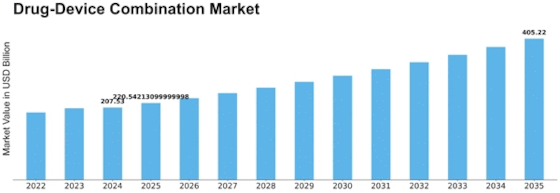

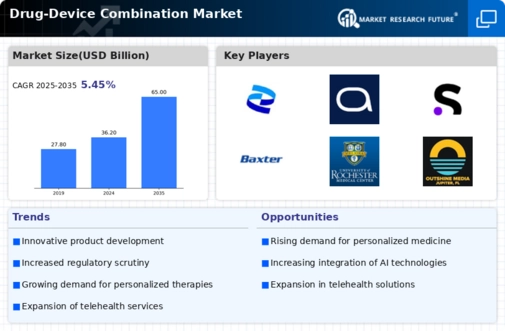
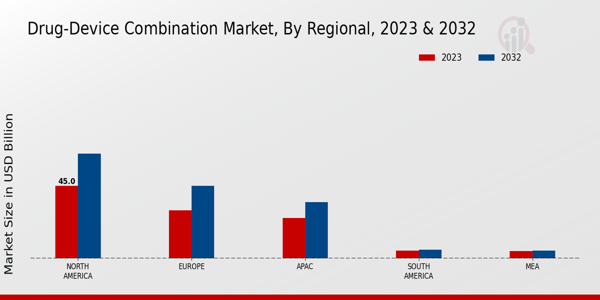
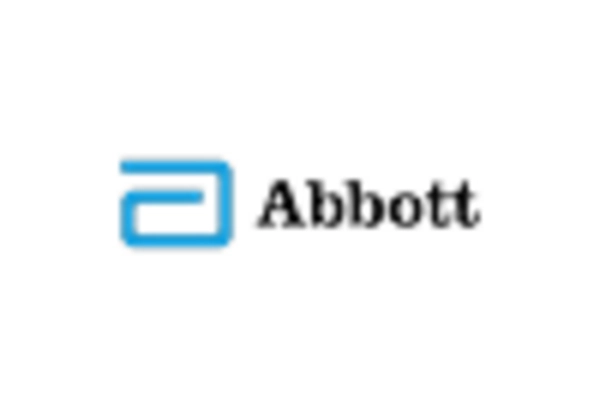
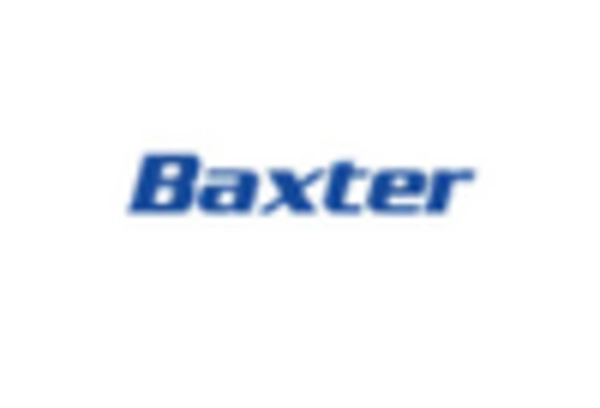
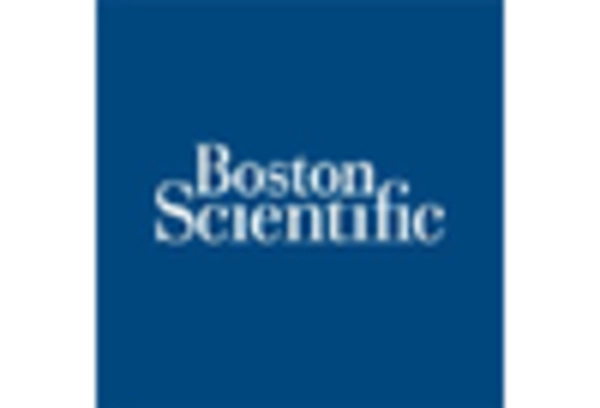


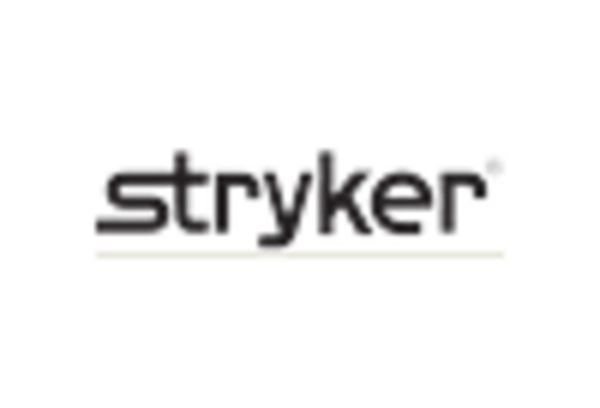









Leave a Comment